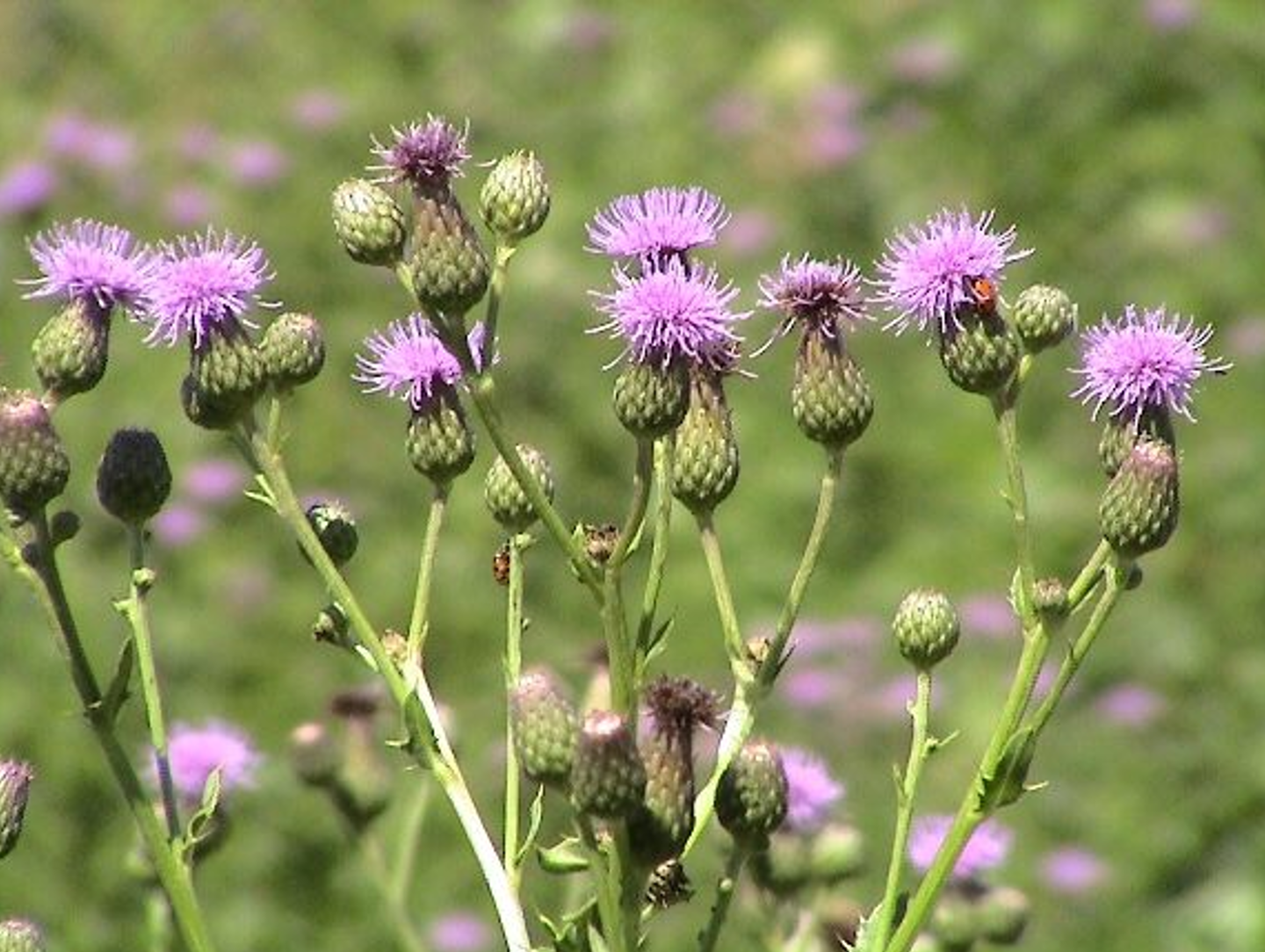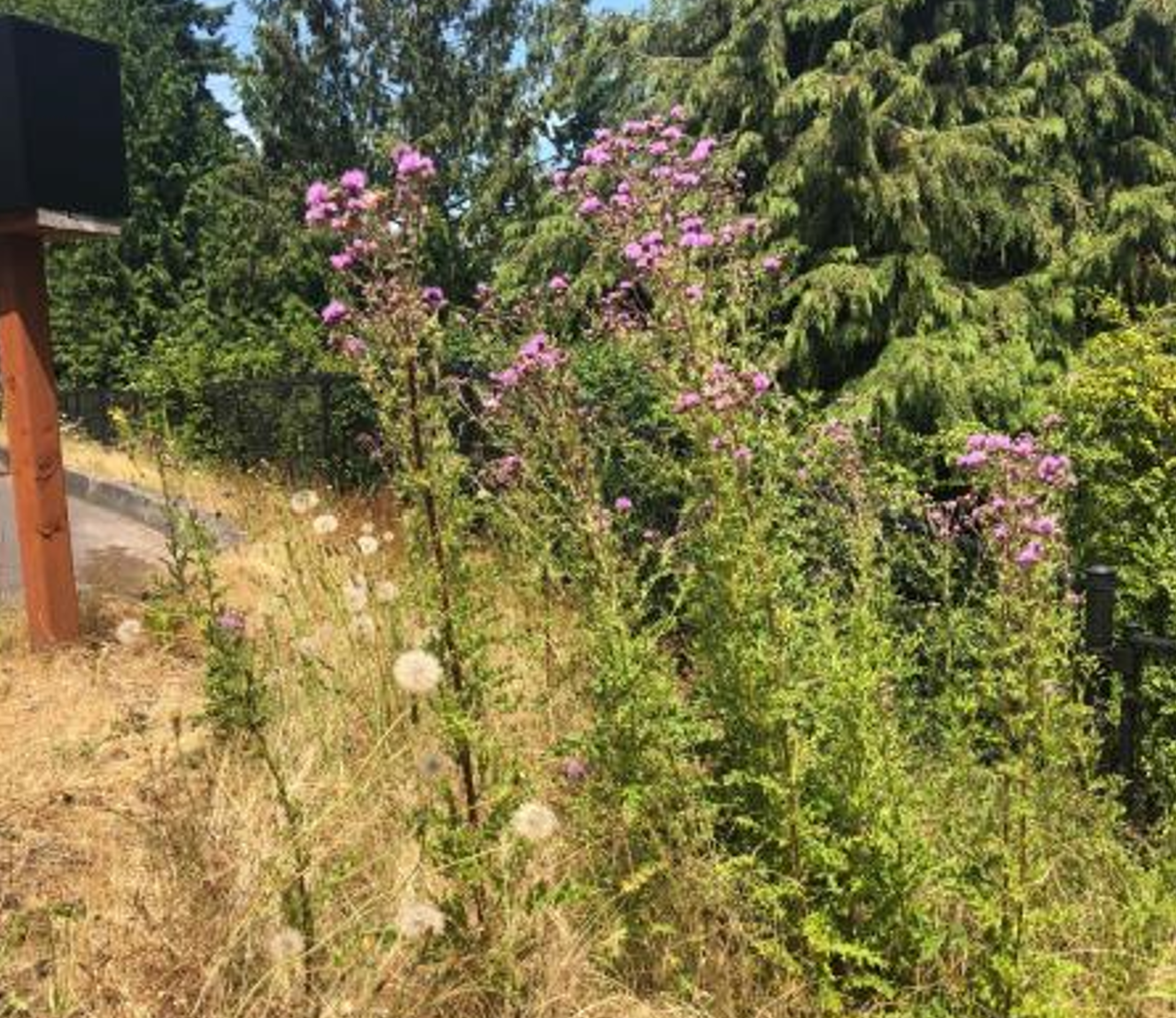Weedy Wednesday Featuring Canada Thistle
Wednesday, July 10, 2024
Have you encountered Canada thistle on your property? Known for its menacing spiny leaves and small purple or pink urn shaped flowers. Canada thistle boasts more than just its looks-it harbours an incredible secret below the surface! Its roots reach as deep as 18 ft below ground.
This perennial weed is not one to surrender easily. Left unattended it will come back with a vengeance every year, thriving everywhere except in waterlogged soil or full shade. In droughts, it sustains itself by extracting nutrients from deep underground. Even more insidious, Canada thistle can regenerate from root fragments as small as ¼ inch!
Canada thistle can propagate two ways: it can create new shoots from its huge root system, and it has special tufted seeds. Which once buried, seeds can lie dormant for two decades!
Despite its resilience, Canada thistle can be effectively managed several ways. Mechanical removal, such as handpicking and weed whipping, is suitable for small infestations, or mowing keep the weed from flowering. But this method requires frequent maintenance throughout the growing season due to the persistence of its root system.
For more extensive or stubborn infestations, herbicide application is highly effective and best in early spring or during fall as the plant readies itself for winter. Timely intervention is key, as missing these windows allows the plant to mature and produce seeds, complicating control efforts.
Implementing a control plan enhances the effectiveness of managing Canada thistle, ensuring that it does not spread and multiply. Techniques like planting and maintaining cover crops over any unused land can prevent its establishment and spread over the long term.
Curious to learn more about these resilient adversaries? The Alberta Invasive Species Council and Rocky View County both have fact sheets available on their websites for Canada thistle and many more. The Association of Alberta Agricultural Fieldmen (AAAF) also has a helpful booklet on weed identification. Act now to safeguard your land against invasive weeds!



Posted in:
Agriculture